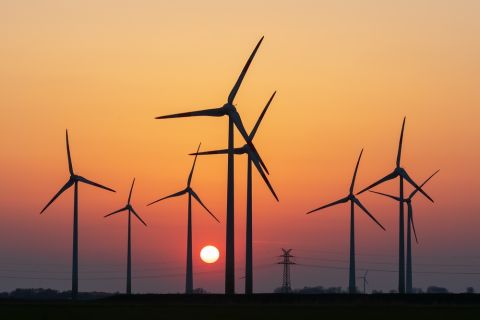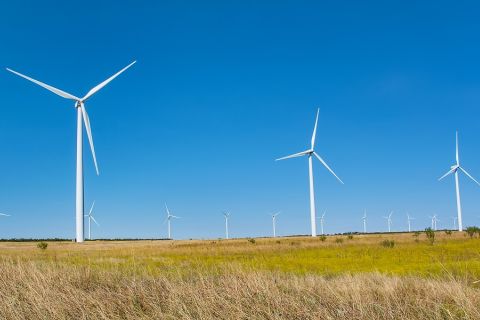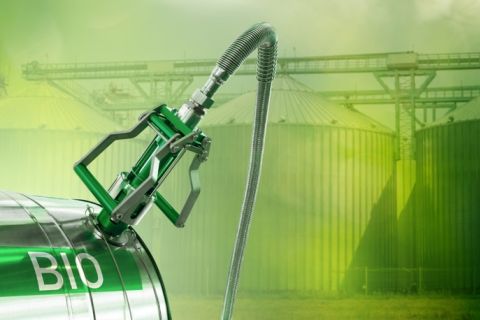This special report was prepared by London-based Global Business Reports after meeting with some of the UAE industry's leaders and upcoming players. It highlights some of the elements leading the UAE oil and gas industry into its rebirth. Authors are Gilles Valentin, oil and gas reporter, Global Business Reports (gilles@gbreports.com); and Ayse Hazir, project and marketing coordinator, Global Business Reports. The United Arab Emirates (UAE) occupies a piece of land that was once disregarded as offering little other interest beyond its coastlines. Bare stretches of sand along the southeastern part of the Persian Gulf, the Trucial States were placed under British influence following the signature of defense treaties with the United Kingdom in the 19th century. A federation of six emirates-Dubai, Abu Dhabi, Al Fujairah, Ajman, Sharjah and Umm Al Quwayn-merged to form the now independent UAE in 1971, and were joined a year later by the northern emirate of Ras Al Khaimah. Playing host to barely any form of economic activity other than pearl fishing, oasis agriculture, regional trading and fishing, and with its tiny population, the discovery of oil in the region provided the trigger for unprecedented rapid development. In 1922 the Trucial States, today's UAE, along with many other kingdoms in the region, signed undertakings not to grant oil concessions except to companies appointed by the British government. Meanwhile, U.S. companies were being granted exploration rights in Saudi Arabia. It was essentially Bapco's discovery of oil in large commercial quantities in 1931 in Bahrain that aroused the interests of British oil companies in actively exploiting the hydrocarbon reserves of the Arab Gulf states. In May 1937, Shaikh Said bin Maktoom of Dubai was the first Trucial Coast ruler to sign a commercial agreement with Petroleum Concessions Ltd. (PCL), a subsidiary of the Anglo-Iranian Oil Co. and formed to explore and exploit Arab Gulf states' hydrocarbon reserves. He was followed by the ruler of Sharjah in September of the same year, and then Shaikh Shakhbut signed for Abu Dhabi in 1939 and then others followed: Ras al Khaimah (1945), Umm al Qaiwain (1945), Ajman (1951) and Fujairah (1953). In Abu Dhabi, the first oil discovered was at the Bab onshore field in 1958. In 1959, oil was discovered at Umm Shaif Field. Dubai discovered oil in 1966 at the offshore Fateh Field, followed by discoveries at South West Fateh in 1970. In 1972 oil was found in Sharjah and then in Ras Al Khaimah in 1983, when Gulf Oil Co. announced the offshore Saleh Field. From there, the country became one of the Middle East's leading producers, under the leadership of Abu Dhabi, which dominates production in the UAE. The numbers In statistical terms, the UAE contains proven crude oil reserves of 97.8 billion barrels, or slightly less than 10% of the world total. Abu Dhabi holds 94% of this amount, and it is also the fifth-largest holder of world gas reserves-about 200 trillion cubic feet (Tcf). The UAE is also the only OPEC producer with spare capacity-some 400,000 to 500,000 barrels per day-to respect its quota with little to show for it except a reputation for discipline. Dubai contains an estimated 4 billion barrels, followed by Sharjah and Ras al-Khaimah, with 1.5 billion and 100 million, respectively. The dominance of Abu Dhabi will become even greater in the coming years as it continues to expand its oil production capacity and step up the production and exports of natural gas. The UAE also deserves a mention for being the only country in the region and amongst OPEC members that has resisted calls for nationalization of the industry following the first oil shock in 1973. International oil companies were allowed to pursue their work in the UAE at times when Saudi Arabia was expelling them and nationalizing the production tools. This allowed production to steadily increase and domestic companies to further transfer competencies and technology. Meanwhile, Abu Dhabi stands out as the first country in the world to produce and export liquefied natural gas (LNG)-in 1977 from the island of Das to Japan. Today, accounting for 90% of the federation's hydrocarbon output and reserves, Abu Dhabi is producing some 2.4 million barrels per day and planning to boost daily production to 4 million by 2010. As a key member of OPEC, many attempts to raise oil production have faced quota restrictions, and Abu Dhabi, via its national oil company Adnoc and subsidiaries, has invested heavily in gas production. This has helped fuel the development of an industrial sector, featuring a petrochemical complex and a fertilizer company and is expected to be instrumental in the development of more such industries in the future. In Abu Dhabi the principal oil production companies (with main fields) are Adco (Asab, Bab, Bu Hasa), Adma-Opco (Lower Zakum, Umm Shaif), Adoc (Mubarraz), Bunduq (El Bunduq) and Zadco (Upper Zakum, Satah). The oil and gas wealth was used to fuel the accelerated development of the UAE, be it in Dubai, Sharjah or indeed Abu Dhabi, and today the country is pushing further ahead to develop an indigenous industrial sector, producing aluminum in Dubai, ethylene and polyethylene in Abu Dhabi and more such energy-intensive products across the federation. Demand for electricity has risen sharply and the country produced just shy of 38 billion kilowatt hours in 2001. Meanwhile, the federation is producing large amounts of fresh water using desalination plants, a very energy-intensive process. Much emphasis has therefore been placed on gas production, again chiefly in Abu Dhabi. Two major projects expected to cost some $2 billion have been undertaken by Gasco, an Adnoc subsidiary: the Onshore Gas Development Phase III (OGD-3) and Asab Gas Development Phase II (Asab-2). Both programs' developments will lead to production of around 1.3 billion cubic feet (Bcf) of feed gas per day for reinjection into oil fields. The OGD-3 is essentially designed to produce higher volumes of natural gas liquids (NGL) and condensate and reinjection of gas into oil fields. The project will involve the construction of a gas plant at Habshan with capacity for processing 1.3 Bcf per day of well-stream fluids into 11,000 tonnes per day of NGL, 3,400 tonnes per day of ethane and 125,000 barrels per day of condensate. The Asab-2 involves setting up two new gas-treatment plants plus two NGL-recovery units with capacity to process some 750 million cubic feet per day into 4,500 tonnes per day of NGL and 1,700 of ethane. Project completion is planned for mid-2007. This highlights the fact that a lot of Abu Dhabi's new gas production will be reinjected into aging oil fields, making it necessary to find alternative sources of natural gas to fuel the UAE's development, where gas consumption is projected to reach 4 Bcfe per day by 2005. Regional gas supply The Dolphin Energy project-considered the largest single energy initiative in the Middle East-is based on expectations for increased gas needs in the region. Dolphin's mission is to produce, process and supply substantial quantities of gas from offshore Qatar to the UAE. A partnership of Qatar, Oman, the UAE and oil companies Total and Occidental, the result would be the largest gas grid-interconnection in the region and its benefits could be extended beyond the original country participants. This crossborder project is a regional first and is expected to have a profound effect on the development of local industry, beginning with delivery of Omani gas, followed by first deliveries of Qatari gas in mid-2006. Meanwhile, the other emirates have not been blessed with the same oil and gas bounties as Abu Dhabi. Dubai is still producing around 170,000 barrels per day but the annual rate of decline is estimated to be as sharp as 15%. The emirate has therefore, alongside the northern emirates of Sharjah, Ras Al Khaimah and Fujairah, launched a very ambitious diversification program to alleviate the effects of declining oil production. As evidence of its obvious success, Dubai ranks No. 1 among the emirates in terms of the number of industrial units, which totaled 854 and investment of 13.3 billion dirhams (US$3.6 billion) at the end of 2001. Its industrial free zone of Jebel Ali has attracted a large number of industrial operations and has turned Dubai into much more than a major trading and financial center for the Gulf Region. The country is also noticeable for its dynamism in the downstream sector, with its state-controlled operator, Emarat, now actively seeking diversification of its retail operations abroad, launching a new venture in Egypt and eyeing other regional markets to alleviate the effect of high oil prices putting a severe strain on the company's profitability. Sharjah is a gas producer, owning 5% of the UAE's gas reserves-a mostly nonassociated gas that is being used domestically. The emirate's most important gas deposits are at the offshore Mubarak Field and the onshore Saja'a, Move and Kahaif fields. Gas reserves are estimated at 10,000 billion cubic meters and around 800 million cubic feet of gas per day is produced. Mubarak is operated by the local Crescent Petroleum Co. and produces around 30,000 barrels per day of condensate. Ras Al Khaimah, the country's most northern emirate and the latest to join the UAE, is trying to reverse the very steep decline of its oil and gas production and wants to promote exploration activities on its territory, thought to contain some undiscovered gas reserves. The emirate's reserves are estimated at 400 million barrels of oil and condensate and 1.2 billion cubic feet of gas. In 1997, Ras al-Khaimah awarded Norway-based Atlantis Technology Services and Petroleum Geo-Services a permit to explore the offshore Baih Field. The Ras al-Khaimah Oil & Gas Co. (Rakgas), set up in 1996, has exclusive hydrocarbon rights to the rest of the emirate. Finally, Fujairah is using its position on the eastern coast of the emirates to be a storage and bunkering destination of choice for the region. Thriving on such a dynamic environment, the UAE service industry is nurturing its competitive advantages, the most notable being its location at the heart of a region holding 60% of the world's oil reserves and a sizeable portion of gas. It also benefits from the cluster competencies developed over years of serving the local and regional industry. Today spreading its competencies well beyond the UAE's borders, the service industry is competing on the global stage and a larger number of foreign operators look at Abu Dhabi or Dubai as a business base to be considered for future operations. Following the tensions surrounding Iraq, it is necessary to look closely at the existing sources of regional stability to have a balanced picture of the oil and gas situation in the Gulf. This report is taking a closer look at some of the major issues and underlines some of the features of the United Arab Emirates, a key market, in the most crucial oil and gas region in the world. M
Recommended Reading
Stonepeak Joins Shizen to Form Asian Onshore Wind Platform
2024-03-26 - Stonepeak will have an 80% interest in the onshore wind energy platform, with Japan-based Shizen retaining the remaining 20% interest.
Scout Signs Agreement with AdventHealth for Texas Wind Farm
2024-02-01 - Scout Clean Energy will supply a portion of its Heart of Texas wind farm to support 40% of AdventHealth’s electricity needs.
Bunge, Chevron Announce FID on Oilseed Processing Plant
2024-03-05 - Bunge Chevron Ag Renewables' facility will be used to manufacture low carbon renewable fuels from oilseed.
Avangrid Begins Construction on its First California Solar Farm
2024-04-10 - Avangrid’s Camino Solar project will generate 57 megawatts of power, the equivalent of the power needs of about 14,000 U.S. homes.
EE North America, Montauk Sign Biogenic CO2 Delivery Deal
2024-02-14 - EE North America and Montauk Renewables signed a contract for the delivery of 140,000 tons per year of biogenic CO2, which will be turned into e-methanol.





